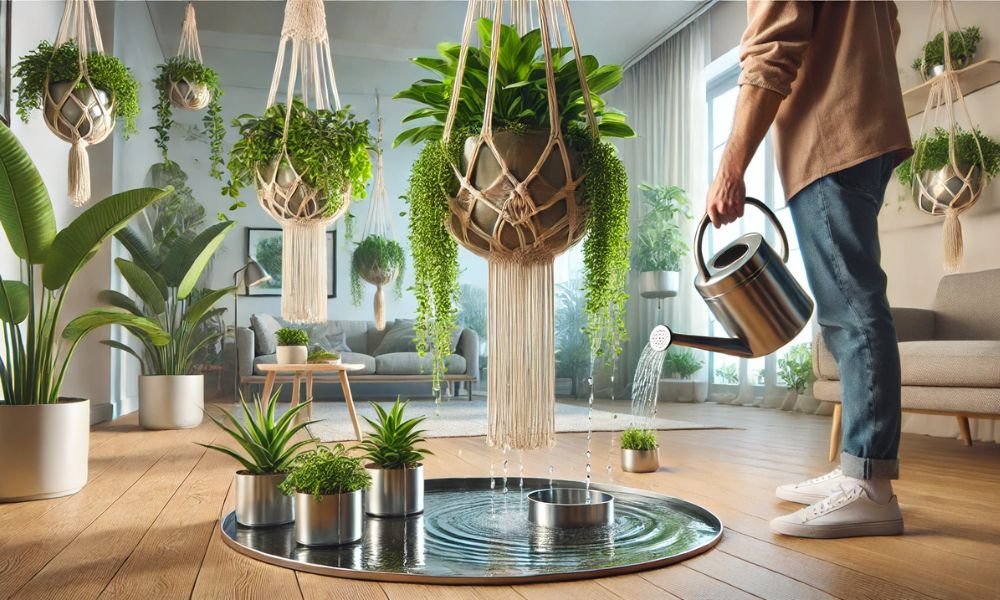Indoor hanging flowers carry lifestyles and splendor to any room, however watering them can occasionally be a messy mission. Learning how to water indoor hanging plants without dripping is crucial for maintaining both the fitness of your flora and the cleanliness of your living space. Whether you are a pro plant enthusiast or a beginner looking to decorate your own home with a little greenery, mastering the approach of drip-unfastened watering can save you from unwanted spills and stains. This manual will walk you through easy, powerful methods to keep your flowers properly hydrated at the same time as making sure your flooring and fixtures live dry. Get geared up to enjoy a lush, vibrant indoor lawn effortlessly!
Understanding Your Indoor Hanging Plants
How Different Types of Indoor Hanging Plants Retain Water

Every hanging plant has its personal personality in relation to water retention. Some plant life, like lush ferns and vining philodendrons, crave moisture, soaking it up speedily and thriving in damp soil. Others, like air plant life and hardy succulents, are more minimalist—requiring little water and storing it for longer stretches. Understanding the water desires of each kind will make all of the distinctions. Rainforest flowers love common watering, at the same time as desert-loving species pick drier situations.
Best Indoor Hanging Plants That Require Minimal Watering

Looking for a fixed-it-and-neglect-it kind of plant? Consider spider vegetation, pothos, or the fascinating string of pearls. These species are low-upkeep, known for their resilience in drought-like conditions, and ideal for people who can’t continuously have a tendency to them. They’re no longer just smooth to the eyes, they’re clean on your schedule too!
How to Recognize When Your Hanging Plants Need Water

Overwatering is a common pitfall, and it’s easy to fall into it with hanging plants. Wilting leaves, discolored foliage, or dried, compacted soil are red flags. For hanging plants, a quick test is to lift the pot—lighter than usual. It’s time for a drink. Regularly observing these signs will help you avoid watering too much or too little.
Preparing to Water Hanging Plants
Tools You Need to Water Indoor Hanging Plants Without Dripping

A few specialized tools can simplify your watering routine. A long-spouted watering can allows for a precise aim, while a watering wand with an adjustable head offers control over the flow—making it easier to reach plants positioned high or in awkward spots.
Choosing the Right Watering Can for Hanging Plants

Not just any watering can will do. For hanging plants, a can with a narrow spout works wonders, giving you the ability to direct water with surgical precision, reducing spills and drips.
Benefits of Using Watering Wands for Precise Watering

Watering wands can be your best friend if you’re a hanging plant enthusiast. Their long reach and controlled flow make watering easy, especially for plants hanging from high ceilings. No more overreaching or spilling!
Preventing Water Drips: Key Techniques
How to Properly Position Your Hanging Plants for Easy Watering
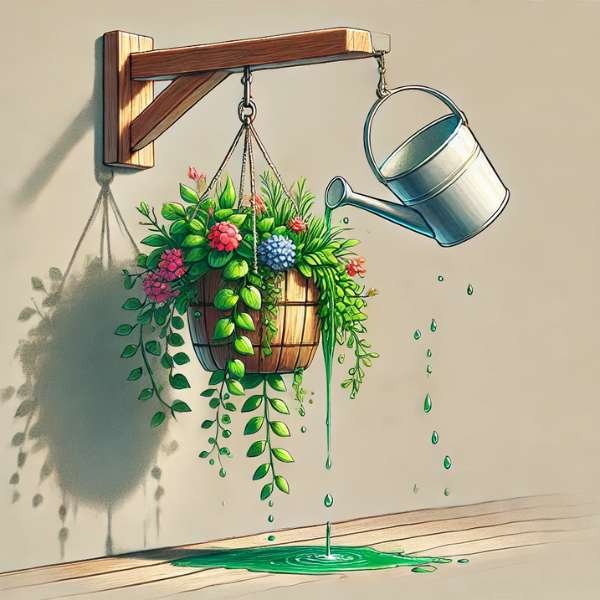
Plant positioning is key to preventing drips. Ensure they’re suspended at a height where you can water them comfortably. Tilting the pot even slightly can cause water to cascade down one side—leading to those dreaded drips.
Using Plant Saucers to Catch Excess Water
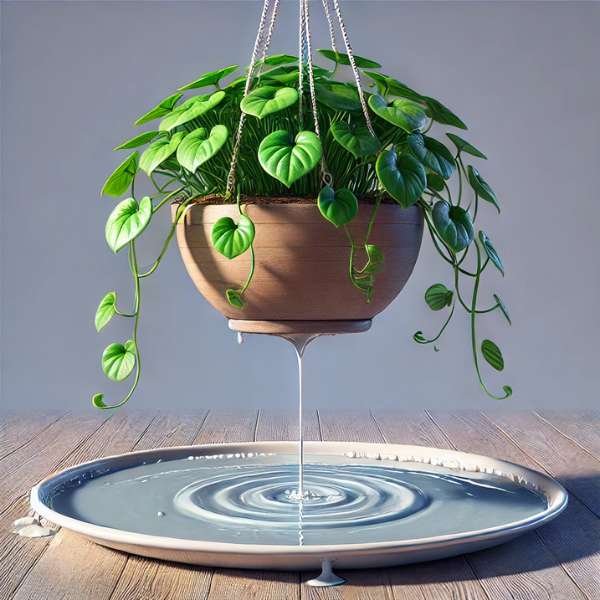
Plant saucers can be a game-changer. They sit beneath your pots and collect any excess water, saving your floors from unwanted mess. Just be sure the saucer is large enough to catch all runoff without allowing the roots to sit in water.
Installing Drip Trays: A Simple Way to Avoid Messes

Drip trays provide every other guard, especially for plants in excessive-traffic regions or near sensitive surfaces. Securely located underneath your pots, they capture water and prevent spillage, leaving your space easy and drip-unfastened.
Watering Methods for Hanging Plants
How to Water Indoor Hanging Plants from the Bottom Up

Try the lowest-up watering approach for much less mess. Place the pot in a shallow dish complete with water, and permit the plant to drink from the bottom through its drainage holes. This approach encourages deeper, more healthy root boom whilst minimizing drips.
The Soak and Dry Method: How to Keep Your Plants Hydrated Without Overflow

For a powerful watering ordinary, use the soak and dry approach. Thoroughly soak the soil, then permit it to dry out earlier than the following watering. This method prevents overwatering and ensures your flowers will increase stronger roots.
To treat abiotic diseases in indoor plants, proper hydration is key. Overwatering or underwatering can stress plants, leading to symptoms like yellowing leaves or wilting. To keep plants hydrated without overflow, ensure the pot has proper drainage, water thoroughly but infrequently, and use a moisture meter to monitor soil levels. Consistency in care prevents water-related diseases.
Misting vs. Watering: Which Is Better for Indoor Hanging Plants?

Misting is an extraordinary opportunity for plants like ferns that crave humidity. A quick day-via-day misting can keep the foliage hydrated, heading off the need for soil saturation and reducing the threat of drips.
Improving Soil to Prevent Overwatering
Choosing Well-Draining Potting Mix for Hanging Plants

Well-draining soil is crucial to preventing water from pooling at some point in the roots. Look for potting mixes rich in perlite or vermiculite, which permit water to drift via without issues.
Adding Perlite to the Soil for Improved Drainage

Perlite can be a lifesaver. It improves soil drainage and aeration, making sure water flows through the soil in the location of accumulating and inflicting root rot.
Maintaining Moisture Balance Without Overwatering
How to Measure Moisture Levels in Your Plant’s Soil

A moisture meter can help take the guesswork out of watering. Alternatively, stick your finger inches deep into the soil—if it’s dry, it’s time to water.
Using Self-Watering Pots for Indoor Hanging Plants

For those with a busy lifestyle, self-watering pots offer an excellent solution. These pots slowly release water into the soil, ensuring your plants remain hydrated without the risk of overwatering.
Dealing With Hard-to-Reach Hanging Plants
How to Water Tall or Hard-to-Reach Hanging Plants Without Spills

Consider using a pulley system for those plants hung high up. It allows you to easily lower the plant to a convenient height, water it, and raise it back without any fuss.
Tips for Using a Ladder or Step Stool Safely When Watering

Ensure your ladder or step stool is placed securely on a stable, flat surface. Overreaching can cause accidents or spills, so stay cautious while watering.
After-Watering Care
How to Ensure Your Hanging Plants Drain Properly After Watering

After watering, let your plant fully drain. Lift the pot slightly to check for excess water and reposition it if necessary to improve airflow and root health.
Cleaning Up Any Spills: Best Practices for Maintaining Clean Floors and Furniture

Sometimes spills are inevitable. Keep microfiber cloths nearby to quickly absorb any water and protect your furniture or floors.
Seasonal Watering Needs
How to Adjust Your Watering Schedule for Indoor Hanging Plants in Winter

During winter, your plants may enter dormancy, requiring less water. Space out your watering schedule, allowing the soil to dry almost completely before the next round.
Managing Watering in Humid vs. Dry Climates
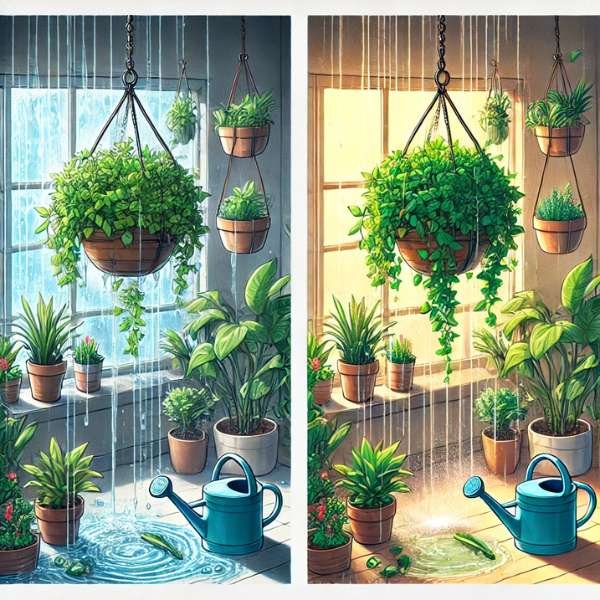
Humidity plays a role in how often your plants need water. In humid environments, you can water less frequently, while dry climates may require more attention to keep your plants hydrated.
Common Mistakes and How to Avoid Them
Signs That You Are Watering Too Much or Too Little
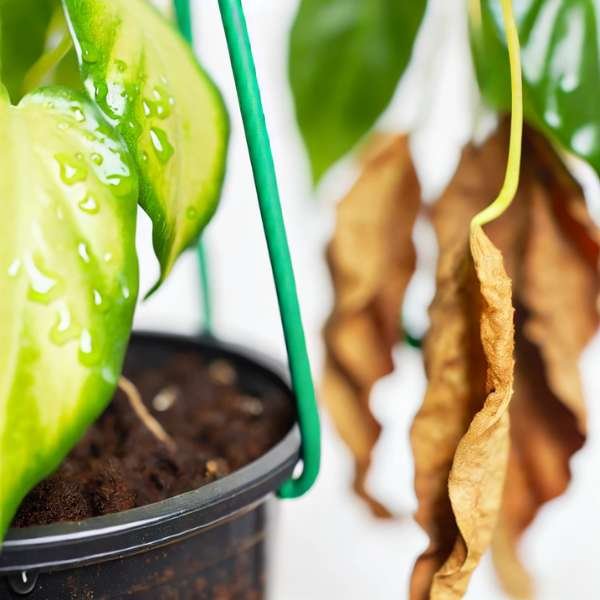
Yellowing leaves or soggy soil? You’re overwatering. Brown, crispy edges? That’s underwatering. Adjust your routine accordingly to keep your plants in perfect shape.
Troubleshooting Dripping Issues
What to Do If Your Hanging Plant Is Constantly Dripping

Consider repotting with better-draining soil or reducing the amount of water you give it each time your plant continues to drip.
How to Report a Hanging Plant to Improve Water Retention

Repotting your plant with a sparkling, well-draining blend will enhance water retention and limit dripping, maintaining both your plant and domestic glad.
Creative Watering Solutions for Busy Gardeners
How to Use a Watering Bulb for Indoor Hanging Plants

Watering bulbs may be a time-saver for busy people. These on-hand devices release water slowly over time, making sure your plant remains hydrated even when you’re away.
Setting Up an Automatic Drip Irrigation System Indoors

For serious plant fanatics, a drip irrigation device can automate the watering technique, delivering water instantly to the roots without waste or mess.
Conclusion
Maintaining indoor flowers doesn’t ought to be messy or complex. With the proper gear, techniques, and information, you can enjoy their splendor without traumatic approximate drips. By the usage of bottom-watering methods, making an investment in drip trays, and learning plant positioning, you’ll have healthy, thriving plants—and a spotless domestic.

